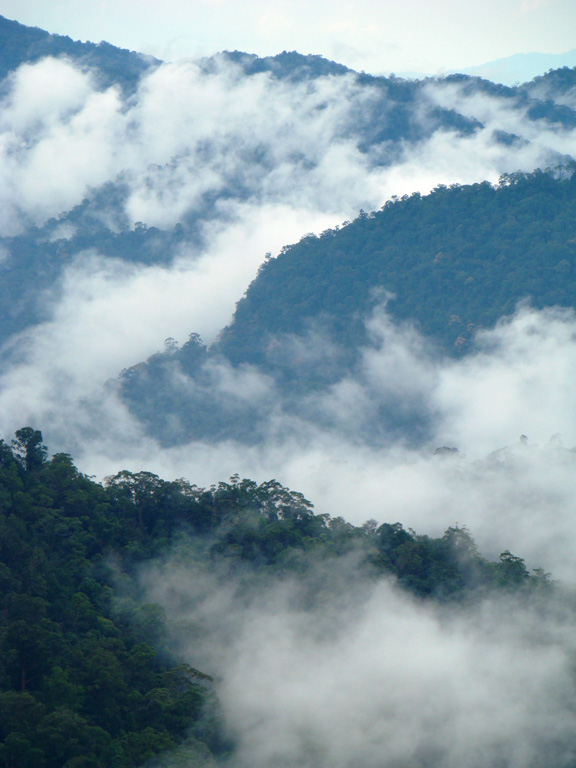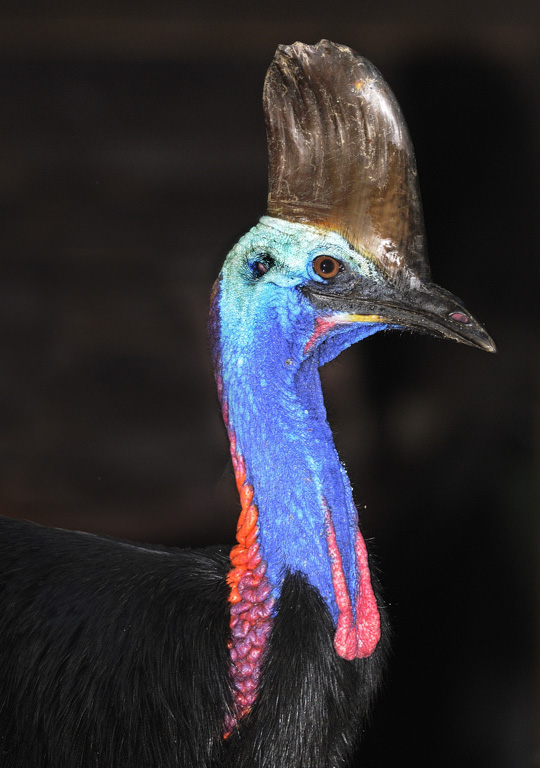- Papua New Guinea intends to nearly double its existing network of roads between now and 2022.
- A new study raises concerns about the impacts of building these roads through tropical forest environments on local communities, sensitive habitats and vulnerable species.
- The authors of the paper, published July 24 in the journal PLOS ONE, suggest that the country would reap more benefits and avoid future debt by investing in existing roads, many of which are largely unusable because of flagging maintenance.
Papua New Guinea hopes to nearly double the length of its road network by 2022, posing grave threats to more than 50 parks and biodiversity-rich areas, according to a new analysis.
The country, occupying the eastern half of the island of New Guinea and a smattering of islands in the South Pacific, is home to a vast bank of tropical rainforest that covers some 328,000 square kilometers (127,000 square miles) — an area about half the size of Texas. These forests seethe with species found nowhere else on Earth, such as the hedgehog-like eastern long-beaked echidna (Zaglossus bartoni) and several species of tree kangaroos — along with massive amounts of carbon locked in the lush vegetation and soil.
But Papua New Guinea’s plans to add more than 6,000 kilometers (3,700 miles) of roads in the next few years, as part of broader efforts to lift the country out of poverty, could seriously endanger that natural wealth, a team of scientists cautions in a new paper published July 24 in the journal PLOS ONE.

“That’s fair enough. They need roads. They need economic development,” Mohammed Alamgir, the paper’s lead author, said at the International Congress for Conservation Biology in Kuala Lumpur ahead of the paper’s publication.
But, “The new roads will create many deforestation hotspots for rainforests and carbon-rich peatlands, sharply increasing greenhouse-gas emissions,” Alamgir, an environmental scientist at James Cook University in Cairns, Australia, said in a statement.
Research has shown that roads open up previously remote areas to logging, agriculture and hunting, leading to dwindling carbon stocks and pushing vulnerable species closer to extinction.
To understand the impacts of Papua New Guinea’s push for road construction, Alamgir and his colleagues compared the government’s development plans with satellite maps showing areas of intact and degraded forest in the country. They also plotted out the locations of parks and reserves, peatlands, and potential or current mining sites, along with the steepness of the slopes throughout the still mostly forested highlands.

The team found that Papua New Guinea stands to lose 3,080 square kilometers (1,190 square miles) of the large blocks called core forests because they’re more than 600 meters (1,970 feet) from the forest edge. The roads will also carve out another 3,740 square kilometers (1440 square miles) of “connectivity forests,” which form critical corridors that allow the movement of species faced with threats such as impacts from climate change.
More than 300 kilometers (186 miles) of the planned roads will also traverse around 680 square kilometers (263 square miles) of peatlands, around half of which stretch 4 or more meters (13 feet) down — in other words, they’re the most carbon-rich of Papua New Guinea’s swampy carbon sponge.
The project “will lead to a quantum leap in forest loss and loss of connectivity, and substantial areas of peatland forest,” tropical ecologist and co-author William Laurance, also of James Cook University, told Mongabay.
That’s concerning, Alamgir said, because so many of Papua New Guinea’s 8 million people depend on forests in some way. As with many such infrastructure projects, he said, the roads are unlikely to benefit the majority of the population.

“A few politicians and land developers are getting very rich, but the rest of the country suffers — with traditional communities potentially losing their forests, fisheries, and clean water,” Alamgir said in the statement.
Indeed, he said, the team’s work shows that several of the roads will go to areas nearly devoid of people. Instead, proposed mining concessions lie along some stretches, hinting at the value of these conduits to companies involved in extracting resources like gold and copper from the country’s interior.
One specific stretch, known as the Epo-Kikori “missing link,” slices through dense-canopy forest. It alone would, by the team’s calculations, lead to the loss of nearly half of the core forest associated with the project. It also cuts across one of the last blocks of relatively undisturbed lowland rainforest known as Kamula Doso. The researchers argue that leveraging the high levels of carbon that this rainforest contains through a scheme such as REDD+ — short for reducing emissions from deforestation and forest degradation — could benefit local communities while keeping the forest standing.

Additionally, many of the roads will be built in Papua New Guinea’s highlands, where steep slopes and copious annual rainfall will drive up the amount of investment required for construction and upkeep. Alamgir and his colleagues suggest that investment might be more prudently directed toward repairing and upgrading rather than expanding the existing road network.
As things stand, many of the roads that already exist in Papua New Guinea aren’t currently well maintained, raising serious questions about the value of expanding the network so aggressively.
“Two-thirds of PNG’s existing roads are nearly unusable,” Laurance said. “Why spend a fortune building new roads that you can’t maintain? If history is a guide, they’ll be big money-losers and will create years of social and environmental crises.”
Banner image of a Goodfellow’s tree kangaroo (Dendrolagus goodfellowi) at Melbourne Zoo in Australia by Richard Ashurst via Wikimedia Commons (CC BY 2.0).
John Cannon is a staff writer at Mongabay. Find him on Twitter: @johnccannon
Editor’s note: William Laurance is a member of Mongabay’s advisory board.
Citation: Alamgir, M., Sloan, S., Campbell, M. J., Engert, J., Kiele, R., Porolak, G., … Laurance, W. F. (2019). Infrastructure expansion challenges sustainable development in Papua New Guinea. PLOS ONE, 14(7), e0219408. doi:10.1371/journal.pone.0219408
FEEDBACK: Use this form to send a message to the author of this post. If you want to post a public comment, you can do that at the bottom of the page.














